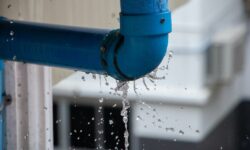Why You Should Familiarize Yourself With Fiber Optics Skills
Technical expert Bob Dolph shares the fundamentals of fiber optics cable installation and provides an example of its importance.

Many technicians think that if you are not working on large systems the option of fiber optics for signal transmission is a moot point. That couldn’t be further from the truth. A tech with a little fiber optics skills, knowledge and training can offer a great performance option to the customers and sales prospects.
This month we’ll look at some of the basics that can start you on your way to gaining confidence in proposing and installing fiber optics configurations.
First, a story. A customer wanted to have a new parking lot camera installed. The security contractor had proposed installing a camera using fiber optic cabling for the video signal transmission, with one of the advantages being a reduced chance of lightning damage. Additionally, using light to transmit the signal would eliminate any possibility of the outside influence of electrical noise.
The overall cable run between camera and buildings was 350 feet. Plus open conduit was available, making fiber even more attractive. The system was installed and connections carefully completed. However, when the camera was fired up it did not show on the console.
Several techs with various experience levels were brought out to fix the problem. After checking and redoing the connections, still no success. What could be the issue?
Well with a little basic fiber optics knowledge this problem could have been foreseen and corrected in the configuration proposal stage, thereby preventing this frustration for the security dealer, techs and most importantly the customer.
Before getting into the specifics of fiber optic systems (FOS), I want to remind you to be well acquainted with the particular components and configurations of the network you will be installing and testing. Determine in advance the tools and testing equipment you’ll need for the job and know exactly how to use them before you arrive at the test site. Here’s a look at some of the necessary FOS fundamentals.
Continuity — This is the most basic test. Make sure there’s no break in the glass fiber, preventing the signal from continuing. One of the least expensive and most useful tools a technician can own for fiber continuity testing is a visual fault locator (VFL). Devices such as the PRO VFL shine a red beam into the fiber and allow a visible fault location up to five kilometers away.
Connector Insertion Loss — Connectors are referred to as “mated pairs.” Read TIA-568B or TIA/TSB 140 standards from cover to cover. The industry standard for signal loss per mated pair is .75dB and not less than .5dB. Remember that dust contamination is the main culprit of light loss in connectors. New FOS connector technology has made life easier for technicians. A good example of this is the AFL FAST Connector. These require no epoxy, are prestubbed and factory polished for easy reliable installation (see Tool Tip below). You may also want to look at investing in a fiber optic microscope for inspecting the cleanliness of the connector ends.
Splice Loss — The standard for this .1dB-.3dB depending on the type of cable, single mode or multimode. Unless you are using very long, low loss fiber runs we will be referencing multimode fiber cable.
Passive Cable System Loss or Attenuation — As we have seen, overall light/signal loss in a fiber cable can come from the connections, splices and cable performance. This can all add up to finding out whether a particular light power level can transport a signal properly. The trick here is that this can be calculated before the equipment is even specified and ordered. Thus saving time and money even before the install is planned and finalized. Sounds like a good and safe way to go, right?
Once the above length and type of fiber cable and number of mated pairs are known, you can go to a loss budget calculator to see if your expected system will work. This can be a downloadable, standalone Excel spreadsheet from many FOS suppliers or an online version from vendors such as Fluke Networks’ SimpliFiber Pro page.
FOS testers can vary from hundreds to thousands of dollars. You may get by with the lower costing optical loss test sets (OLTS) instead of the more costly optical time domain reflectometer (OTDR). Be careful selecting a reliable product.
By the way, the solution to our mystery camera installation problem: After doing a loss budget calculation it was confirmed that there was too much loss for the present configuration. Fortunately, the calculator sheet showed that at a 1,300nm wavelength the system would work.

AFL says the connectors’ precision mechanical alignment ensures low loss. (Photo: AFL)
Tool Tip
The FastConnect field-installable connectors from AFL come prepolished to completely eliminate the need for hand polishing in the field. A factory-installed wedge clip comes with each connector and has indicators for a pass/fail signal.
If you enjoyed this article and want to receive more valuable industry content like this, click here to sign up for our FREE digital newsletters!

Security Is Our Business, Too
For professionals who recommend, buy and install all types of electronic security equipment, a free subscription to Commercial Integrator + Security Sales & Integration is like having a consultant on call. You’ll find an ideal balance of technology and business coverage, with installation tips and techniques for products and updates on how to add to your bottom line.
A FREE subscription to the top resource for security and integration industry will prove to be invaluable.














